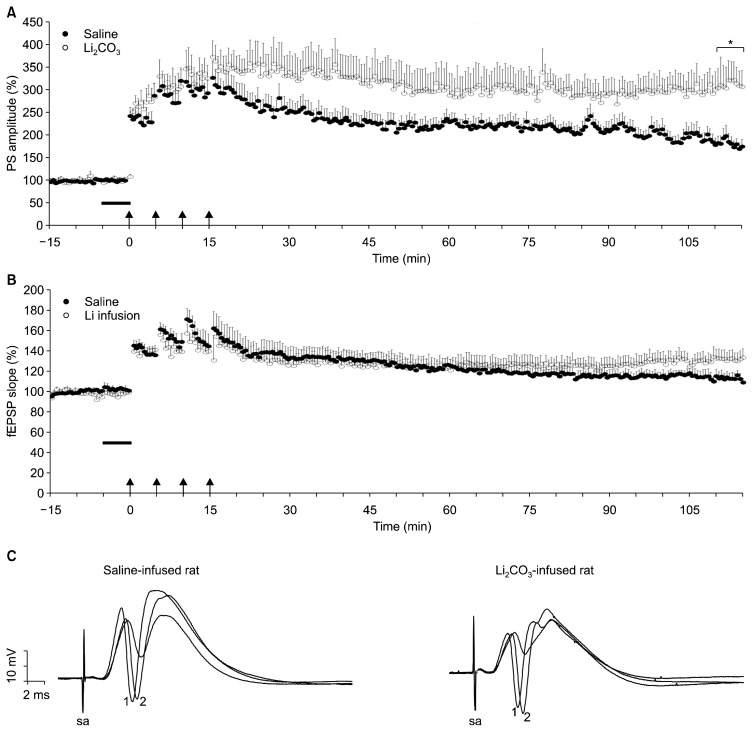Fig. 3.
A 5-minute infusion intrahippocampal Li2CO3 infusion enhances the long-term potentiation (LTP) of population spike (PS) amplitude in the dentate gyrus of hippocampal formation. After a 10-minute baseline recording, saline or Li2CO3 was infused into the dentate gyrus (horizontal black bar) and LTP was induced by means of high-frequency stimulation (HFS) (arrows; 100 Hz, 1 second, 4 times), which was applied beginning at time 0. This protocol induced LTP of both PS (A) and field excitatory postsynaptic potential (fEPSP, B) in the dentate gyrus neurons of both group. The magnitudes of the short-term potentiation of both fEPSP and PS measured at 1 to 5 minutes after tetanus are comparable between saline-infused rats and Li2CO3-infused rats. PS amplitude was more potentiated between 110 and 115 minutes in lithium-infused (Li) group compared to saline-infused group (*). Error bars denote the standard errors of the means. n=7 for each group. (C) Traces are representative of field potential recordings made immediately before (time point, −1 minute; not depicted) and after HFS (time point, 15 minutes; depicted with “1”) and at the end of the experiment (time point, 75 minutes; depicted with “2”). Note the higher ratio of PS (the down-going deflection) amplitude in trace depicted with “2” to that in trace not depicted (the magnitude of LTP) in Li2CO3-infused rat.
sa, stimulus artifact.

